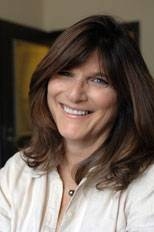Was it coincidence? An era dubbed "the time of silence" -- the years between 1642 and 1660 in England when Puritan rulers shuttered theaters -- was also a period of intense interest in experimental science.
Three years ago, MIT students began to take an in-depth look at this period during a drama, science and performance seminar taught by professors Janet Sonenberg and Diana Henderson. Research and other material developed by students have served as the basis for an unusual play, premiering Nov. 12 in London, that examines themes of science, philosophy, creativity and family relations.
The Royal Shakespeare Company's production of "The Tragedy of Thomas Hobbes," written by Adriano Shaplin and directed by Elizabeth Freestone, will run through Dec. 6 at Wilton's Music Hall in what Sonenberg characterizes as a "wild and daring enterprise" that overturns preconceived notion of what a "science play" is all about.
"We're trying to give the audience a layered story that moves them on many different levels, some of which includes a bold ride through history and through science, but more importantly, through this deep human reality that scientists are not exempt from," said Sonenberg, the play's dramaturg.
The play has characters representing Hobbes (1588-1679), a philosopher and scientist; Robert Hooke (1635-1703), a scientist who coined the term "cell"; Robert Boyle (1627-1691), a philosopher, chemist, physicist and inventor; political leader Oliver Cromwell (1599-1658); and King Charles II, and as well other historical and fictitious figures. The plot gives a sense of the era's political unrest and scientific excitement.
"This is a moment when the world is turned completely upside down," said Sonenberg, professor of theater arts and section head of music and theater arts.
The collaboration between MIT and the RSC began several years ago when MIT Corporation Chairman Dana Mead introduced the two organizations with an eye toward forging connections between them. Sonenberg began conducting her imagination technique with the actors, directors and designers of the RSC, and during one of those productions she posed the idea for the play to Michael Boyd, the RSC's artistic director.
Sonenberg, who has developed new acting techniques and is the author of "The Actor Speaks" and "Dreamwork for Actors," became intrigued with the idea of creating a play set during the Puritan Revolution, appreciating the irony of a theater piece about a time when public theater was halted. After the project received a grant from the Ensemble Studio Theater and the Sloan Foundation, she and Henderson, an expert on Shakespeare, drama and gender studies, developed a seminar in which students delved into 17th century history, dug out original materials, and created dramatic scenes. "We wanted them to see the two-way street between the past and the present," Henderson said.
Henderson and Sonenberg brought in Shaplin, a New York-based contemporary playwright and founder of the Riot Group, to help students hone their dramatic skills. Soon students were writing scenes that imagined what it was like to be a 17th century actor or scientist. They recreated some of the era's experiments, as well as some of the debates between Hobbes and Boyle. They imagined two out-of-work actors, whom Shaplin turned into the characters Rotten and Black. "They really got to see how a play gets made," said Henderson, professor of literature and dean for curricula and faculty support.
Then Shaplin took the material and began working on a contemporary theater piece for the RSC; it opens in London in 1558 and its characters interact as if they were part of a large dysfunctional family.
"Whose version of the truth is right? Whose version of science is right? And who gets to author it?" These, Sonenberg said, are some of the questions raised by Shaplin's drama. The work draws a "connection between the closing of the theater and the rise of experimental science, which is where science was being performed for a group of likeminded gentlemen," Sonenberg said.
Sonenberg and Henderson, who continue to teach "Learning from the Past: Drama, Science, Performance," hope to see a version of "The Tragedy of Thomas Hobbes" brought to MIT after its London run.







